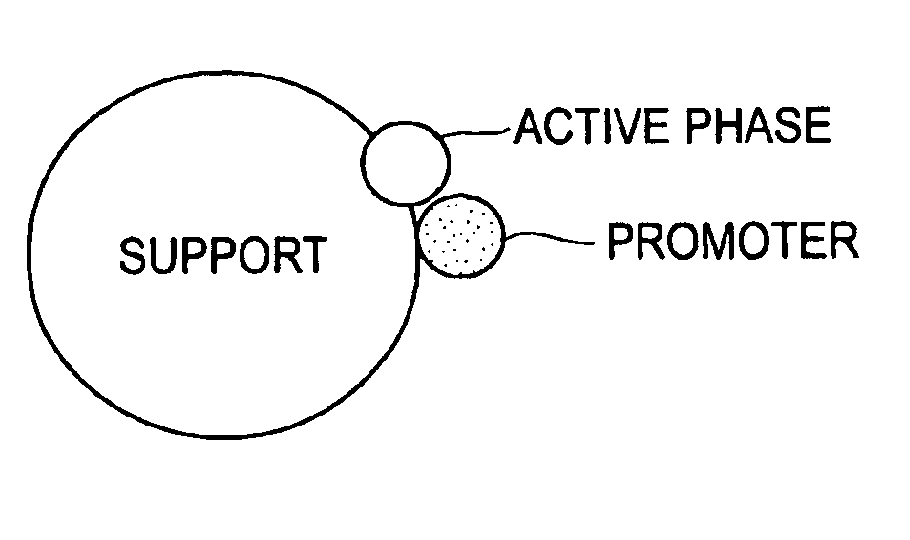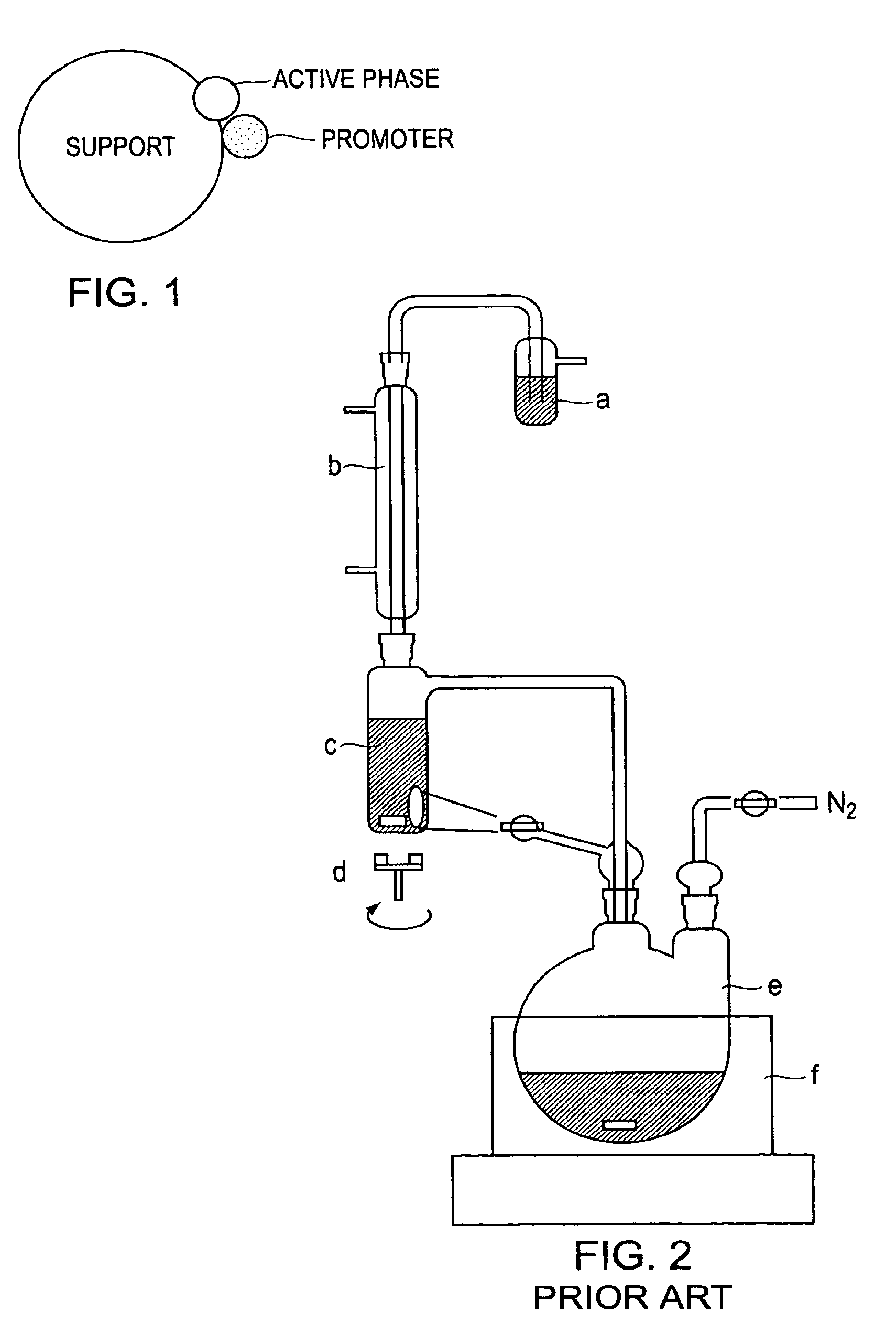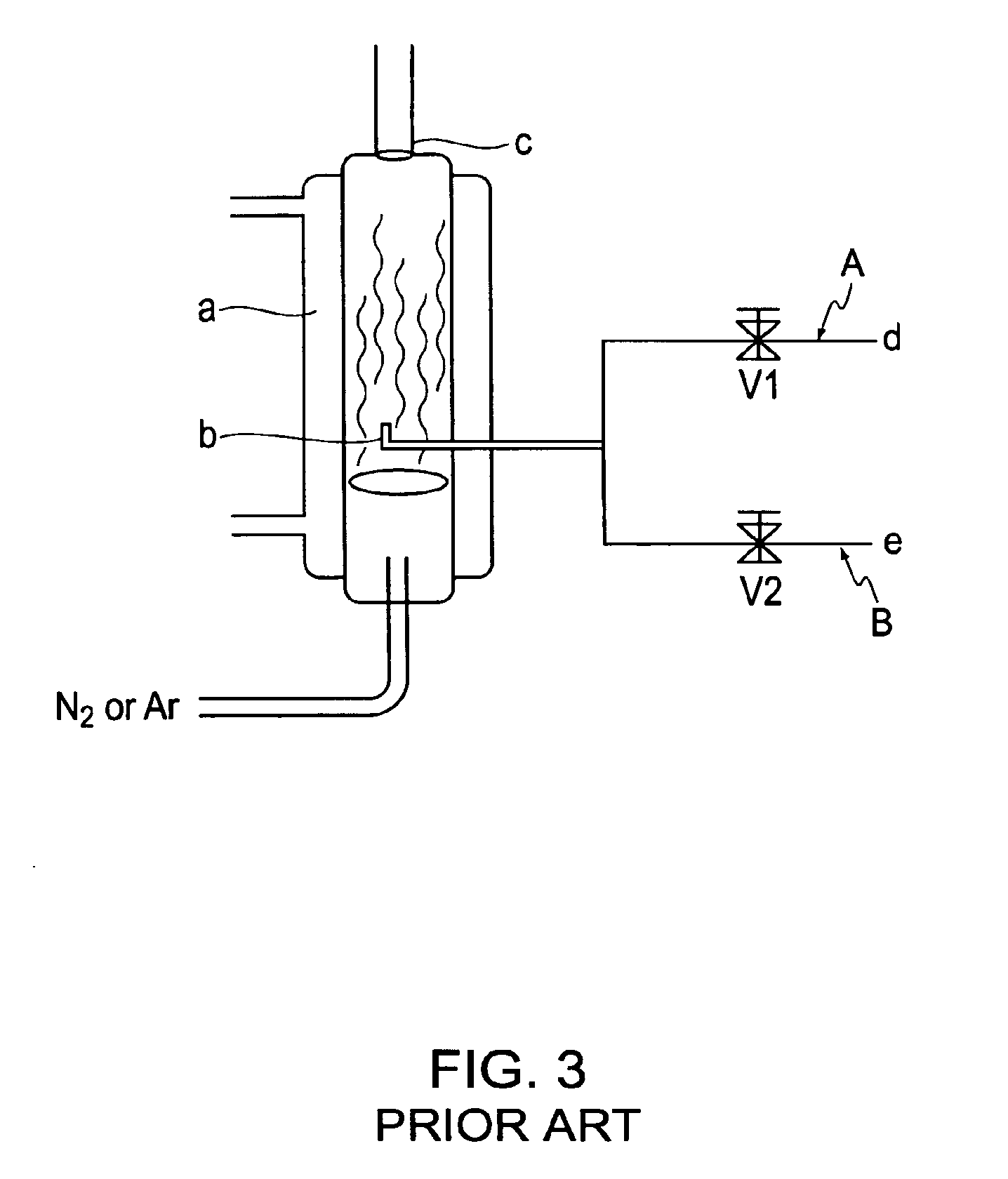Catalytic formulation and its preparation
a catalyst and formulation technology, applied in the field of heterogeneous catalysts, can solve the problems of catalyst separation, high catalyst cost, and limited practical application, and achieve the effect of simple solid-liquid separation
- Summary
- Abstract
- Description
- Claims
- Application Information
AI Technical Summary
Benefits of technology
Problems solved by technology
Method used
Image
Examples
experiment 1
(Verification of the hypothesis)
[0157]This comparative example illustrates the validation of the hypothesis that anions having two or more negative charges when interacted with group IIA metal cations except Mg+2 invariably result in to a precipitate which is practically insoluble in organic solvents (including nonpolar, polar (protic and aprotic) and sparingly soluble in aqueous solvent in certain cases). This hypothesis was verified as follows. Solutions of different anions were interacted with group IIA metal ions. 0.1 molar solutions of anionic component (solution A) and 0.1 molar solutions of group IIA cation (solution B) component were prepared. 10 ml of solution B was mixed with 50 ml of solution A in boiling tubes solutions were thoroughly mixed on shaker for 10 hr. resulting suspensions were centrifuged and precipitate was removed by decanting supernatant liquid. Residual precipitate was diluted with distilled water followed by centrifugation and decantation was repeated th...
experiment 2
Synthesis of high purity oleum
[0161]2 lit. Three-necked flask was attached with distillation condenser, addition funnel and to another end collection vessel with bottom drain valve. Distillation condenser was also provided with pressure relief non-return valve. In flask magnetic bar was placed and 500 g. P2O5 was charged. 45 ml conc. H2SO4 was placed in collection vessel. 400 ml conc. H2SO4 was placed in addition funnel. Addition was started with simultaneous magnetic agitation over the period of 2 hours. Temperature of flask was raised slowly until slow distillation of sulfur trioxide was started. Sulfur trioxide was collected in conc. H2SO4 in collection vessel after total volume of liquid in collection vessel reached to 148 ml, heating was stopped and assembly was dismantled.
experiment 3
Synthesis of Triphenyl phosphine trisulfonate
[0162]Triphenyl phosphine trisulfonate was synthesized by following procedure. Triphenylphosphine 50 g. was placed in sulfonation reaction followed by vacuum argon degassing and blanketed with argon. Sulfonation reactor was cooled to 5° C. and 200 g sulfuric acid was charged in the sulfonation reactor without allowing temperature of reactor to cross 10° C. Addition of sulfuric acid was carried out with constant stirring with mechanical stirrer over a period of 2 hours. Reaction mixture assumed pale yellow color. To this reactor 280 g of 65% oleum prepared as per previous experiment was charged over a period of 60 min. temperature of the sulfonation reactor was raised to 22° C. and reaction was continued for 76 hours. There after temperature of the reaction was lowered to 0° C. and 50 ml distilled and degassed water was introduced in the sulfonation reactor without allowing temperature to rise beyond 5° C. over a period of three to four ho...
PUM
| Property | Measurement | Unit |
|---|---|---|
| melting point | aaaaa | aaaaa |
| boiling point | aaaaa | aaaaa |
| temperature | aaaaa | aaaaa |
Abstract
Description
Claims
Application Information
 Login to View More
Login to View More - R&D
- Intellectual Property
- Life Sciences
- Materials
- Tech Scout
- Unparalleled Data Quality
- Higher Quality Content
- 60% Fewer Hallucinations
Browse by: Latest US Patents, China's latest patents, Technical Efficacy Thesaurus, Application Domain, Technology Topic, Popular Technical Reports.
© 2025 PatSnap. All rights reserved.Legal|Privacy policy|Modern Slavery Act Transparency Statement|Sitemap|About US| Contact US: help@patsnap.com



